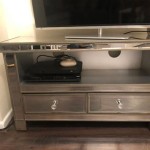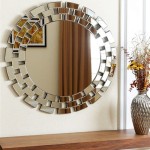Can I Mirror From iPhone to Mac?
Mirroring an iPhone's screen to a Mac offers significant advantages for various tasks, from presenting information to troubleshooting device issues. This article explores the available methods for screen mirroring from an iPhone to a Mac, outlining the processes involved and highlighting the strengths and limitations of each approach.
Using AirPlay to a Mac with macOS Monterey or Later: Apple's AirPlay technology provides a seamless wireless mirroring experience between iPhones and compatible Macs. Macs running macOS Monterey or later can directly receive AirPlay streams from iPhones, iPads, and other Apple devices. To initiate screen mirroring, users access the Control Center on their iPhone, tap "Screen Mirroring," and select the desired Mac from the list of available devices. The iPhone's screen content will then be displayed on the Mac's monitor.
This method offers high-quality mirroring with minimal latency, making it suitable for activities such as gaming, watching videos, and delivering presentations. Furthermore, the Mac's larger display can enhance productivity for tasks involving detailed visuals, like photo editing or graphic design. However, AirPlay mirroring requires both devices to be on the same Wi-Fi network and a relatively strong network connection for optimal performance. Older Macs running operating systems prior to macOS Monterey do not support this direct AirPlay mirroring functionality.
Using QuickTime Player: For Macs running older macOS versions, QuickTime Player offers a wired mirroring solution. Connecting the iPhone to the Mac using a USB cable and selecting the iPhone as the camera input source within QuickTime Player allows users to mirror the iPhone's display on the Mac. This wired connection ensures a stable and reliable mirroring experience, independent of Wi-Fi network conditions.
QuickTime Player mirroring is particularly useful for recording the iPhone's screen activity. Users can utilize QuickTime Player's built-in recording functionality to capture demonstrations, tutorials, or gameplay footage. While offering reliable performance, this method necessitates a physical connection between the devices, potentially limiting mobility. Additionally, some users may find the setup process slightly less convenient compared to the wireless AirPlay method.
Third-Party Applications: Several third-party applications offer screen mirroring capabilities between iPhones and Macs. These applications typically utilize a combination of wired and wireless connections to facilitate screen mirroring and often provide additional features such as screen recording and remote control functionality. Reflector, LonelyScreen, and AirServer are examples of such third-party applications.
These applications cater to users seeking advanced features or requiring compatibility with older macOS versions. However, it is essential to consider factors such as cost, performance, and security when choosing a third-party mirroring application. Users should thoroughly research and evaluate the available options before making a selection.
Choosing the Right Method: The optimal method for mirroring an iPhone to a Mac depends on specific needs and available resources. AirPlay provides a convenient and high-quality wireless solution for compatible Macs. QuickTime Player offers a reliable wired option for older macOS versions and screen recording purposes. Third-party applications cater to specific requirements and offer additional features.
System Requirements and Considerations: Regardless of the chosen method, ensuring compatibility between the iPhone and Mac's operating systems is crucial. AirPlay requires macOS Monterey or later, while QuickTime Player mirroring works with older macOS versions. Third-party applications often have their own specific system requirements. A stable internet connection is essential for AirPlay mirroring, while a compatible USB cable is necessary for the wired QuickTime Player method.
Troubleshooting Common Issues: Occasional connectivity problems or display issues can arise during screen mirroring. Checking the Wi-Fi connection for AirPlay mirroring and ensuring the USB cable is properly connected for QuickTime Player can often resolve these problems. Restarting both devices can also help rectify software glitches. For third-party applications, consulting the application's specific troubleshooting documentation can provide solutions to common issues.
Security Considerations: When using third-party applications, it is crucial to download them from reputable sources and ensure they have positive user reviews. This helps mitigate the risk of installing potentially harmful software. Additionally, consider the privacy implications of screen mirroring, especially when handling sensitive information. Ensure the mirroring session takes place in a secure environment to protect data privacy.

How To Mirror Iphone Display Macbook Ios 12 Macos Mojave

How To Mirror Iphone Mac Without Wi Fi

How To Mirror Iphone Screen Mac Quick Easy Wireless 2024

2024 Updated How To Mirror Iphone Mac With 5 Methods

5 Easy Steps To Mirror Iphone Mac Istreamer

2024 Updated How To Mirror Iphone Mac With 5 Methods

How To Mirror Iphone Mac 8 Methods

How To Use Apple Airplay Mirror Your Iphone Mac Screen On Tv Roku And More Cnet

Newest How To Mirror Iphone Mac Macbook Airdroid

How To Mirror Mac Iphone








